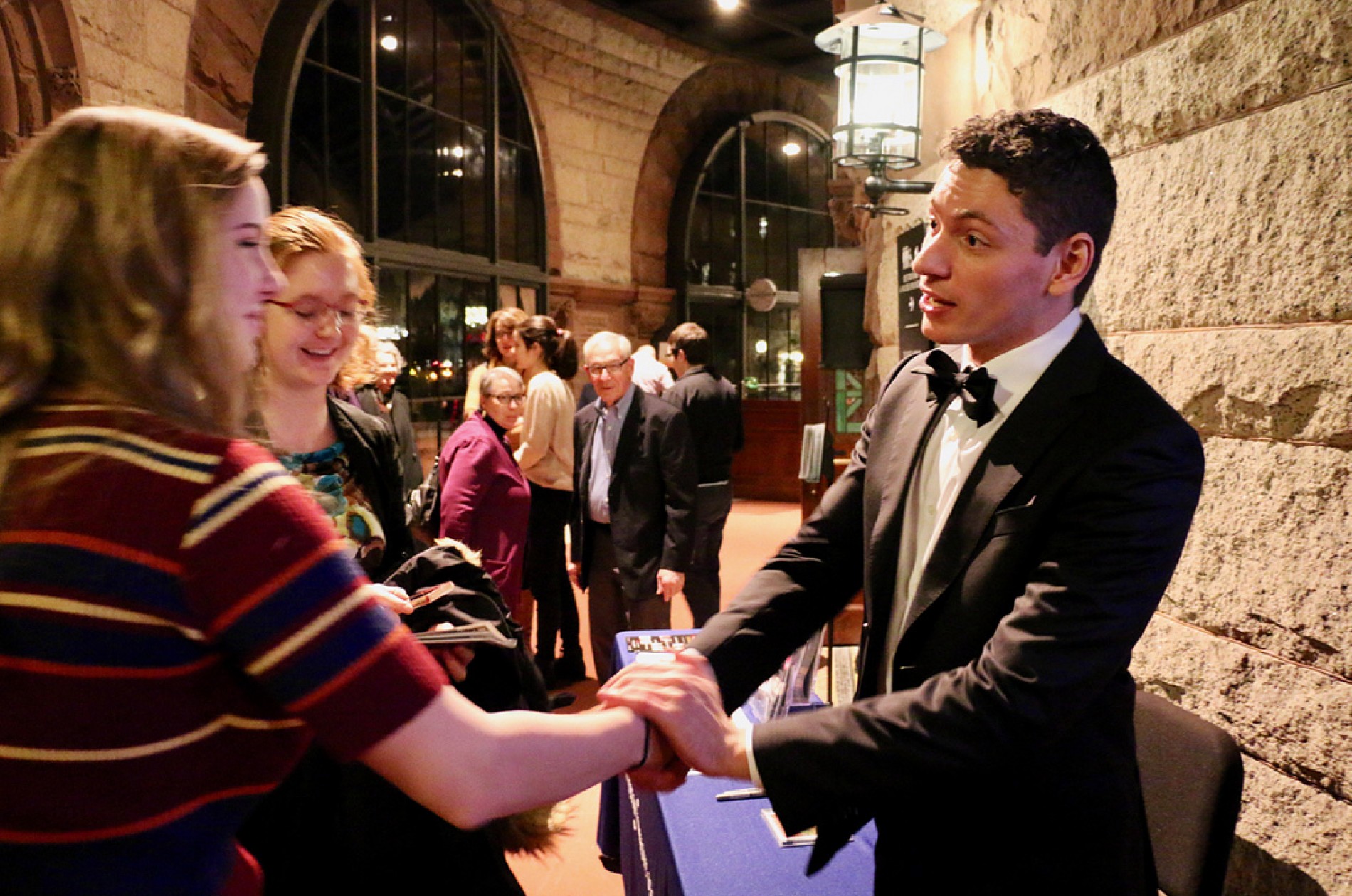What to Expect

A visit with the Princeton Symphony Orchestra (PSO) can be an transformational experience. Once you walk through the doors of the Orchestra's main stage at Richardson Auditorium, you will come upon people of all walks of life who love being able to enjoy live orchestral music in the heart of Princeton. For those who have never been to an orchestral concert before, here are some tips:
- Relax and enjoy the music. Orchestral concerts are a great escape from day-to-day routines once you open yourself up to the music. If you zone out in the middle of a symphony, don't worry. Live music brings on a host of emotional and physical responses. A slowly pulsating piece can bring on a delightful zen-like dream state, while a moving passage can really tug at the heart strings. And when 60-70 of our musicians unite in a rousing symphonic finale, the hall positively buzzes with energy, leading many to stand up and cheer--"Bravo!"
- The concert begins. As you arrive, you may encounter orchestra members readying themselves onstage for performance. Some may be checking their music or adjusting their instruments while others quietly talk among themselves. When the lights dim, all come to attention for the arrival of the concertmaster. Also known as the principal violin, the concertmaster bows to the audience before turning to the orchestra and leading them in a final tuning before the conductor comes onstage.
- You play an important role as an audience member. Many don't realize it, but the conductor and musicians onstage respond to the audience arrayed in front of them. They absorb the pulse of the hall intuitively, and this impacts the way works are performed. YOU become part of the music! Every live performance is different because no two audiences are alike.
- Some words about applause - we love it! But when to cheer or clap? Greet the concertmaster and/or the conductor as they come onstage by clapping. Applaud at the end of a performance of a complete work, but not after each of its movements (movements, if any, are listed under the titles of each work in concert programs). Concertos usually have 3 movements while symphonies typically have 4. There is often, though not always, a pause between movements as the conductor and musicians prepare for the tempo and mood of the next movement. If you're not sure when to clap, watch for the conductor to turn toward the audience or wait for others to begin to respond before joining in. In the end, it's your personal reactions that matter more than concert tradition. If you are engaged in the music and spontaneously start to clap, chances are that others feel similarly and will join in!
- Good-to-know tips: Look over your program book before the concert begins to learn more about the music director, conductor, any soloist, and the music to be performed. Remember to turn off your cell phone if you don't want to be an impromptu soloist during the concert. No photography or recording devices are allowed within the concert hall without express permission of the Princeton Symphony Orchestra and Richardson Auditorium. Please don't leave the hall during performance of a work unless you have a serious medical emergency. Avail yourself of the lobby and/or downstairs restrooms before or after the concert or during intermission.
- Any questions? Contact a member of the PSO team at 609-497-0020.
